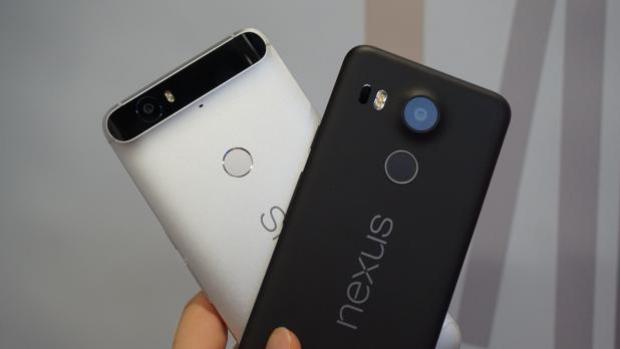

Will HTC produce both Nexus 2016 smartphones? Rumours suggest maybe
HTC might be creating as many as TWO Nexus devices on Google’s behalf inside 2016, according to the latest information.
The HTC-built Nexus is now apparently being tested, runs Android N and — according to GizmoChina — supports a full implementation of Google’s upcoming 3D Touch feature. But it won’t just be the HTC Nexus that rocks 3D Touch; Xiaomi and OPPO as well as a bunch of other Chinese phone makers will all utilise the new feature inside 2016.
It is also worth noting that a few Android phone makers have already implemented 3D Touch inside their handsets. Huawei, for instance. However, with 3D Touch — or whatever it is called when it lands — hardwired inside Android the performance and scalability will be much greater, as Google will be able to open it up to its legion of developers.
What is odd, though, is Huawei not returning in 2016. The Nexus 6P still remains one of our favourite Android handsets currently available and was, easily, the most accomplished release of its kind in 2015. Usually, when Google has a very successful Nexus handset on its hands it keeps the OEM around for a couple of generations. Case in point: Samsung and LG.
But, no. This year’s Nexus handsets will apparently be 100% HTC. And this is rather strange on several levels.
Firstly, there’s HTC’s own difficulties in the smartphone market; it’s no secret it’s not doing too well with its own devices. Of course, such a deal could be very beneficial to HTC, as it was for LG, in propelling the device maker to the centre of the public eye. On top of this, there’s been more than a few reports about problems with the Huawei-made Nexus 6P and its metal bodywork and, popularity issues aside, few can argue with HTC’s prowess in making metal bodied phones. On the other hand HTC did make the Nexus 9 tablet and that did sweet Fanny Adams to help the then-ailing firm.
Secondly, well we hate to point out the bleeding obvious but there’s not a lot of difference between a 5in and 5.5in form factor. Sure, the Nexus 6 and Nexus 6P had their critics purely on the point of the foibles associated with phablet-scale devices, and maybe Google wants to shrink the larger model slightly because of this. But still, having two devices with only half-an-inch between them does seem rather redundant to say the very least.
But for us the most glaring oddity is not only having HTC in on the Nexus project at all, but handing over both smartphone devices for that year to the same manufacturer. Sure, 2015 was the first year we saw two Nexus phone products launched in tandem, but prior to that when Google has been introducing phones and tablets to the range it has always picked one manufacturer for each device.
This does raise the quesion of whether these will be the ONLY two Nexus devices launched in 2016, to us it suggests probably not, perhaps we will still see additonal models from the likes of LG and Huawei, as well as tablets too, if rumours are to be believed. Frankly, we find it a hard sell to imagine Google putting all its eggs in one HTC-branded basket.
HTC Partnered On Google Nexus Program For Next Three Years?
HTC may actually be working on more than two device for Google’s Nexus project, well, not in the immediate future – the rumours stll say we’re looking at a couple of Nexus phones in 2016 and possible a tablet, some, or possibly all of which may be made by HTC. BUT, allegedly HTC may be making more devices in subsequent years, as it’s claimed the firm has partnered with Google for a three-year deal to make Nexus hardware.
The info is contradictory to earlier reports which indicated Google was effectively wrapping up the Nexus project as an external partnership program and bringing everything in house – Apple style. But it seems this is perhaps not the case, and instead we’ll see continued deals between Google and OEMs over Nexus development and manufacturing.
The sources, which were picked up via Chinese social network Weibo, say that HTC will make both a 5in and 5.5in Nexus phone inside 2016
[“source-Gadgets”]

